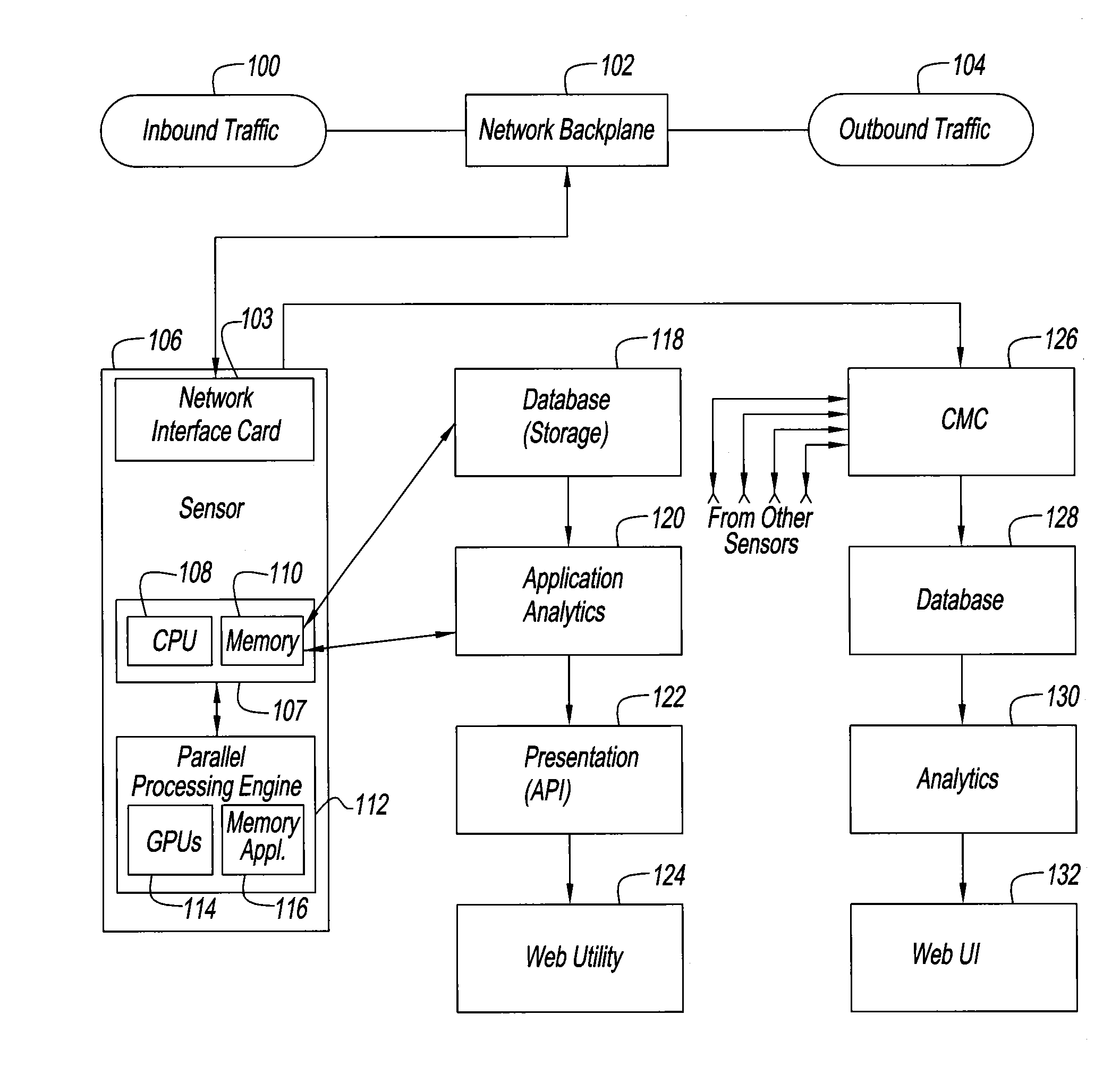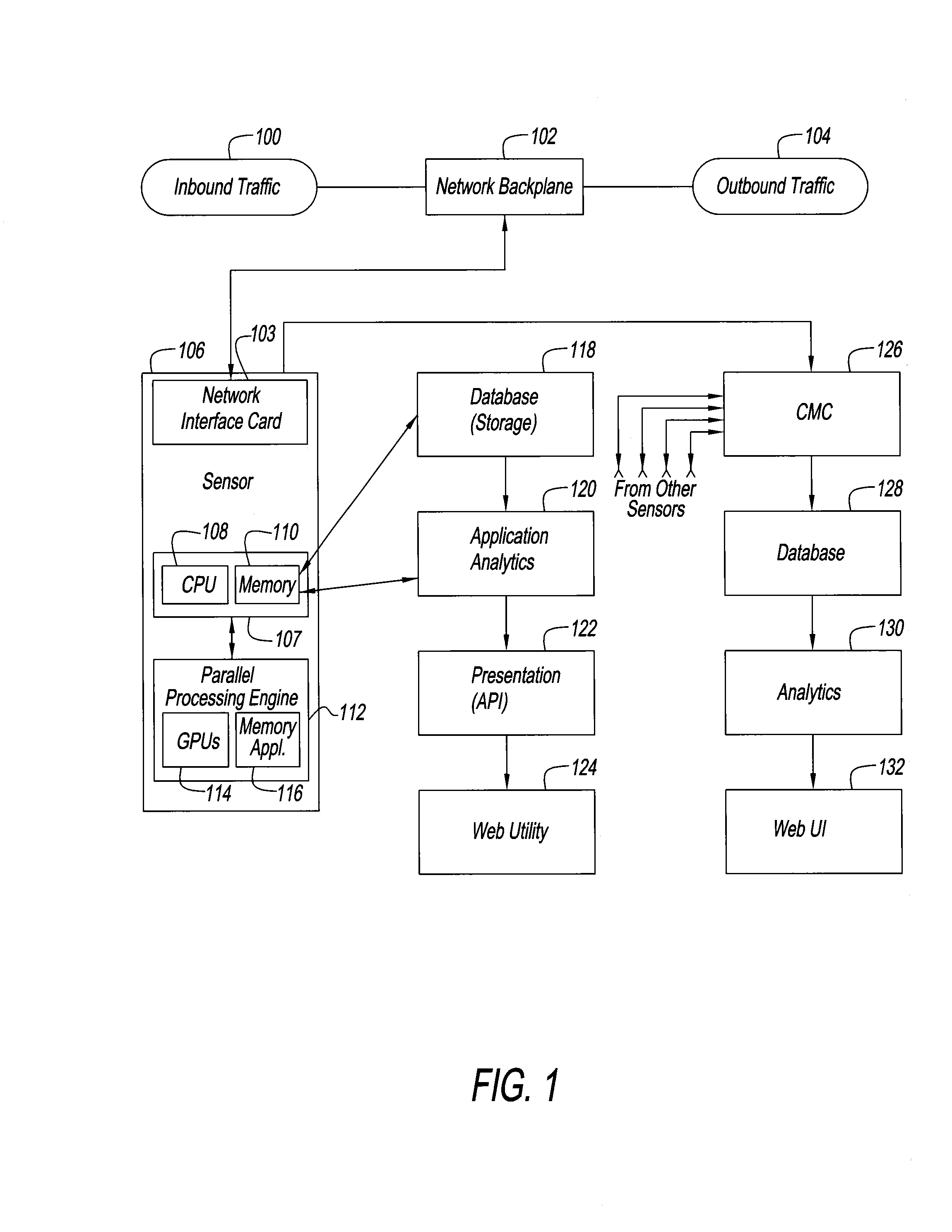Accelerated threat mitigation system
a threat mitigation and accelerated technology, applied in the field of systems and methods for dealing with threats to computers and computer networks, can solve the problems of malicious destruction of data or operating capability, increasing the risk of data loss, etc., to achieve high speed and performance
- Summary
- Abstract
- Description
- Claims
- Application Information
AI Technical Summary
Benefits of technology
Problems solved by technology
Method used
Image
Examples
Embodiment Construction
[0044]Referring to FIG. 1, a source of inbound Internet traffic 100, is connected to a network backplane 102 of an organization's computer network. The backplane 102 is also a source of outbound traffic 104 from the organization to the Internet.
[0045]An Internet traffic sensor 106 is used to acquire both inbound and outbound packets and to inspect the packets for threats to a computer system of which the network backplane 102 is a part. Sensor 106 is connected to network backplane 102 by a network interface card (not shown) having multiple Ethernet connections to capture network traffic. Traffic sensor 106 includes a first computer system 107 comprising a CPU 108 and a memory 110. Memory 110 includes an operating system for CPU 108 and a set of programs, the operation of which is more fully described below.
[0046]CPU 108 can include a 64 MByte HDD cache memory. Preferably, it is a Trusted Platform Module (TPM) chip or interacts with a TPM chip (not shown), and enables the use of a cr...
PUM
 Login to View More
Login to View More Abstract
Description
Claims
Application Information
 Login to View More
Login to View More - R&D
- Intellectual Property
- Life Sciences
- Materials
- Tech Scout
- Unparalleled Data Quality
- Higher Quality Content
- 60% Fewer Hallucinations
Browse by: Latest US Patents, China's latest patents, Technical Efficacy Thesaurus, Application Domain, Technology Topic, Popular Technical Reports.
© 2025 PatSnap. All rights reserved.Legal|Privacy policy|Modern Slavery Act Transparency Statement|Sitemap|About US| Contact US: help@patsnap.com



